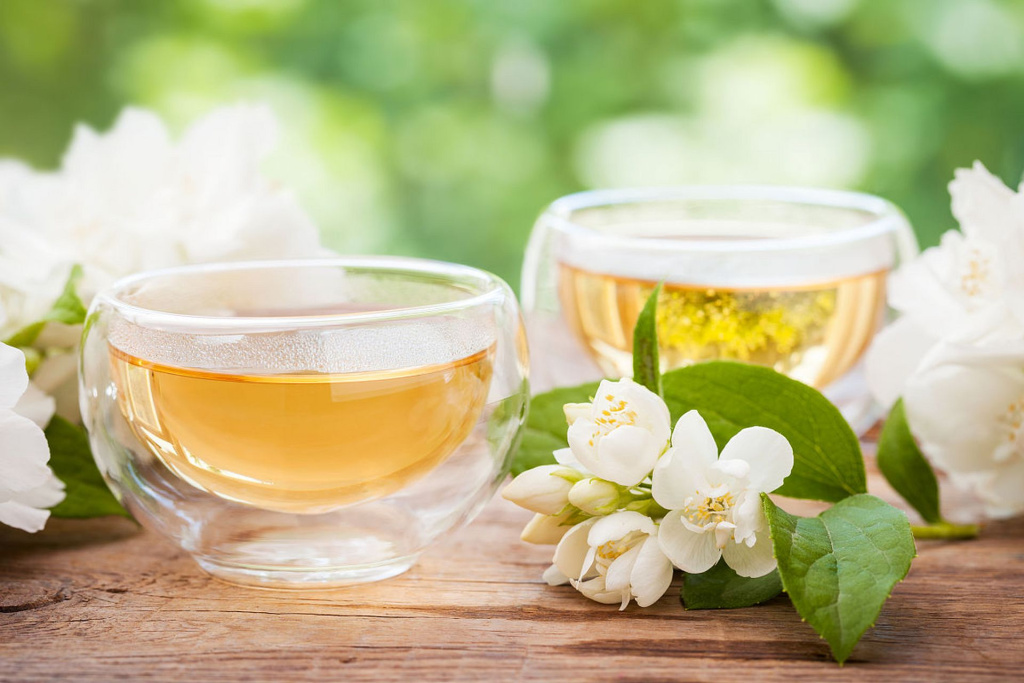The Legend of Chinese Jasmine Tea: A Fragrant Story of Love, Devotion and Gratitude
Jasmine tea (Chinese: 茉莉花茶, pinyin: Mòlì huā chá) is one of the most popular types of tea in the world. Its delicate aroma and sweet taste have won the hearts of millions of people. But few people know about the beautiful legends that surround the history of this amazing drink.
A story of love and sacrifice
Once upon a time, in a Chinese village, there lived a young girl named Meiling. She was known for her beauty and kind heart. Her favorite pastime was picking fragrant jasmine flowers that grew on the nearby hills. One day, Meiling met a young tea master named Lin, and feelings flared up between them.
However, fate separated the lovers. Lin went to distant lands to find rare varieties of tea for the emperor. Meiling was very upset by the separation and every day she picked jasmine flowers to keep the memory of her beloved alive. One day, when Lin returned, he found Meiling seriously ill. Despite all efforts, she could not be saved.
The saddened Lin decided to immortalize the memory of his beloved. He took the jasmine flowers that Meiling had picked and added them to the freshly picked tea leaves. When the tea was ready, its aroma was so beautiful that Lin knew that Meiling would remain with him forever in this tea.
Since then, jasmine tea has become a symbol of love, devotion and eternal memory. The legend of Meiling and Ling has been passed down from generation to generation, and the tea they created has become one of China's most valuable treasures.
A story about gratitude
Long ago, a Beijing tea merchant named Chen Guqu was researching what kind of tea northerners preferred with an experienced tea master. Suddenly, Chen Guqu remembered that a southern girl had once given him a tea bag, which he had never tried. He took it out and asked the master to evaluate it. When the lid of the cup was opened, first an extraordinary aroma spread, and then in the rising steam they saw a beautiful girl holding a bouquet of jasmine. A moment later, she turned into clouds of steam. Chen Guqu did not understand and asked the master. The master replied, "This tea is the highest grade among teas, the tea of gratitude." Chen Guqu remembered how three years ago, on a trip to the south to buy tea, he stayed at an inn and met a lonely girl. The girl told him that she had her father's body at home, and she had no money for the funeral. Chen Guqu, deeply sympathetic, gave her some money. Three years later, in the spring, when he was in the south again, he received this small tea bag from the innkeeper. The innkeeper said that it was given to him by the same girl three years ago. Chen Guqu had not brewed it then, and now it turned out that it was a precious type of tea. "Why with jasmine?" they asked and brewed it again. The girl with jasmine appeared in the pair again. Chen Guqu, drinking tea, had an epiphany: "In my opinion, this is a sign from the tea spirit that jasmine can be added to tea." The following year, he added jasmine to the tea and thus created a new type of tea - jasmine tea (one of the ten most famous types of tea).
How Fragrance Is Born: The Process of Creating Jasmine Tea
Jasmine tea is an exquisite drink that has won the hearts of millions of people with its delicate aroma and subtle taste. But how is this miracle created? Let's dive into the amazing world of jasmine tea production and discover all the secrets of this ancient art.
Collection of raw materials: tea leaves and jasmine flowers
The first and most important stage is the collection of high-quality raw materials. To create jasmine tea, the best varieties of green tea are used, collected during the period of maximum concentration of useful substances. Jasmine flowers are collected early in the morning, when they are most fragrant and fresh.
Fusion of aromas
After picking, the tea leaves and jasmine flowers are carefully sorted and prepared for the aromatization process. There are several methods for creating jasmine tea:
- Hot aromatization: Tea leaves and jasmine flowers are mixed at high temperatures. This process allows the aromas of jasmine to penetrate deeply into the tea leaves.
- Cold aromatization: Tea leaves and jasmine flowers are left together for several days at room temperature. This method produces a softer, more refined aroma.
- Multiple aromatization: To obtain a particularly rich aroma, the aromatization process can be repeated several times.
Secrets of Mastery
The process of flavoring jasmine tea requires great skill and experience. Tea masters carefully control the temperature, humidity and contact time of tea leaves and jasmine flowers. Every nuance affects the final result and determines the quality of the finished tea.
The finishing touches
After aromatization, the tea leaves are separated from the jasmine flowers and subjected to final drying. The finished jasmine tea has a delicate aroma of jasmine and retains all the beneficial properties of green tea .
Why is jasmine tea so popular?
- Unique aroma: The combination of green tea and jasmine aromas creates a unique and harmonious bouquet.
- Health benefits: Jasmine tea is rich in antioxidants, vitamins and minerals. It helps improve mood, relieve stress and boost immunity.
- Rich History: The legends and traditions associated with jasmine tea make it even more attractive to connoisseurs.
Today, jasmine tea is extremely popular all over the world. It is produced in China using traditional technology, combining delicate tea leaves with fragrant jasmine flowers. Each stage of its creation is the result of painstaking work by tea masters, and each sip of this tea is a journey into the world of delicate aromas and ancient legends.
- Comments
- Vkontakte





